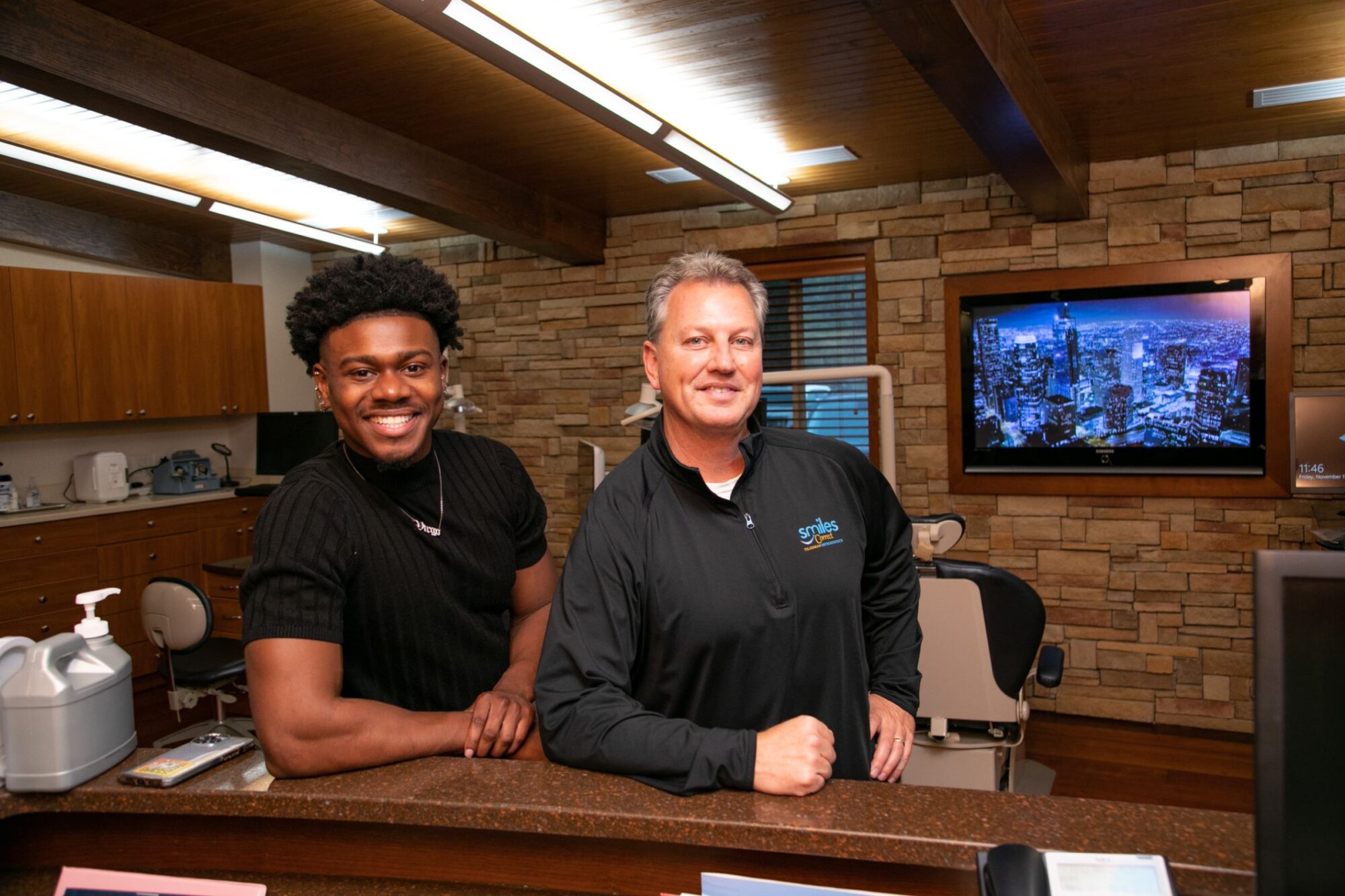Here at Tilghman Orthodontics, we’re proud to be Berlin and Salisbury-area parents’ go-to solution for orthodontic care for their children. Dr. Tilghman and Dr. Schwartz care deeply about providing budget-friendly care that doesn’t sacrifice quality, and that’s what we’re always working to promote. But when should that care start? The answer is different for different children, and that’s why we offer two-phase orthodontic treatment. But what is that? Who is it for? And how does it help? We’ll answer all that and more below, so let’s get started!
When Should My Child See An Orthodontist?
You may be surprised to learn that Dr. Tilghman, Dr. Schwartz, and the American Association of Orthodontists recommend that every child see an orthodontist by age seven! You may be wondering what’s so special about that age. Well, the key lies in the stage of development. Before age seven, children haven’t fully developed their adult tooth and jaw configuration, making it difficult for Dr. Schwartz or Dr. Tilghman to assess any potential orthodontic issues. On the other hand, if a child is much older than seven, those same dental and bite problems may have already become more established, requiring more extensive correction in the future.
Therefore, age seven is the ideal sweet spot. Dr. Schwartz or Dr. Tilghman can identify emerging tooth and jaw problems and provide preventive care to make the orthodontic journey smoother when braces or Invisalign are needed. Essentially, age seven is the goldilocks period for early orthodontic care!
What Does Two-Phase Treatment Treat?
Two-phase treatment addresses various orthodontic issues that commonly arise later in life. However, early intervention during phase one can significantly reduce the complexity of phase two (primary care) for children with specific developmental concerns related to tooth and jaw growth.
Early Interceptive Treatment – Phase One
Phase one, also known as early interceptive treatment, is recommended for children with moderate to severe orthodontic problems that can benefit from early intervention. According to the American Association of Orthodontists, this applies to approximately ten to fifteen percent of children.
During phase one, Dr. Schwartz or Dr. Tilghman will focus on making sure your child has sufficient space for the growth of permanent teeth, reducing the risk of overcrowding—a problem that can lead to complications later on. Phase one treatment also addresses bite growth and your child’s jaw, correcting issues such as crossbites and underbites.
If your child’s upper or lower jaw isn’t developing correctly, early orthodontic treatment can help prevent future dental problems, including injuries, the need for tooth extraction, or even jaw surgery. If left untreated, these issues may require braces later in life. Phase one treatment typically lasts between nine to 18 months. Afterward, Dr. Schwartz or Dr. Tilghman will prescribe a retainer, which should be checked every four to six months until the remaining teeth come in.
Dr. Schwartz or Dr. Tilghman may use the following techniques during phase one treatment:
- Specialized retainers
- Headgear
- Limited braces on select teeth
- Space maintainers
- Functional appliances
- Expansion appliances
Phase one treatment addresses the following issues:
Jaw discrepancies: Early intervention can help manage problems with jaw growth, such as underdeveloped or overdeveloped upper or lower jaws.
Crossbites: Phase one treatment can correct crossbites, where the upper and lower teeth do not meet properly.
Crowding: Early treatment can alleviate severe crowding, allowing permanent teeth to erupt correctly.
Bad habits: Orthodontic appliances effectively correct harmful oral habits like thumb sucking or tongue thrusting, which can impact dental development.
Braces, Invisalign, and More – Phase Two
Phase two focuses on ensuring each tooth is correctly positioned in the mouth and in harmony with the other teeth, jaws, lips, cheeks, and tongue. This phase involves making permanent adjustments to give your child a long-lasting, healthy smile.
Phase two is when traditional orthodontic methods come into play. Braces or Invisalign aligners are applied to both the upper and lower teeth, as needed. This phase builds upon the planning and records made during the first phase of treatment. Once completed, your child’s orthodontic journey will come to an end.
Tilghman Orthodontics Has You Covered!
At Tilghman Orthodontics, we’re dedicated to guiding our patients through every stage of their orthodontic journey, regardless of age. Whether you need treatment for your children, teenagers, or yourself, we’ve got you covered! Our Berlin and Salisbury-area patients are our livelihood, and we’re grateful to have the opportunity to serve them to the best of our ability every time.
If you’re ready to embark on the journey towards a lifetime of confident smiles, call us today at 410-742-4813 or simply fill out this convenient online form for a free consultation. Dr. Schwartz, Dr. Tilghman and our dedicated team at Tilghman Orthodontics are eager to start crafting the smile of a lifetime for you and your loved ones. We look forward to seeing you soon!
